
I am a senior scientist with a joint appointment at the University of Leuven (KU Leuven) and the Royal Observatory of Belgium. I apply theoretical and laboratory tools in geosciences and astrophysics to better characterise exoplanets. My research interests include developing models of planetary interior structure and evolution, geochemical cycling and interior-atmosphere coupling, and performing high-pressure laboratory experiments to simulate planetary mineralogy and magma-gas interactions.
Stay tuned for research opportunities at KU Leuven and the Royal Observatory of Belgium.
View my publications in ADS here. My ORCiD is 0000-0003-4815-2874. My email contact is kaustubh.hakim at kuleuven.be
Number of exoplanets discovered until today (from exoplanet archive)
Research

The extra-solar planets, or exoplanets, are the planets outside the Solar System. There may exist more than 1000 billion exoplanets in our galaxy alone. Some of these exoplanets are solid or "rocky" like our Earth and it is not so strange to think that at least a small fraction of them can harbour alien life! As a scientist, I am interested in investigating the chemical composition of the interior and atmosphere of exoplanets.
Watch my recent virtual seminar for NASA Goddard Space Flight Center's exoplanet series: YouTube.
Mass-Radius relations of Exoplanets
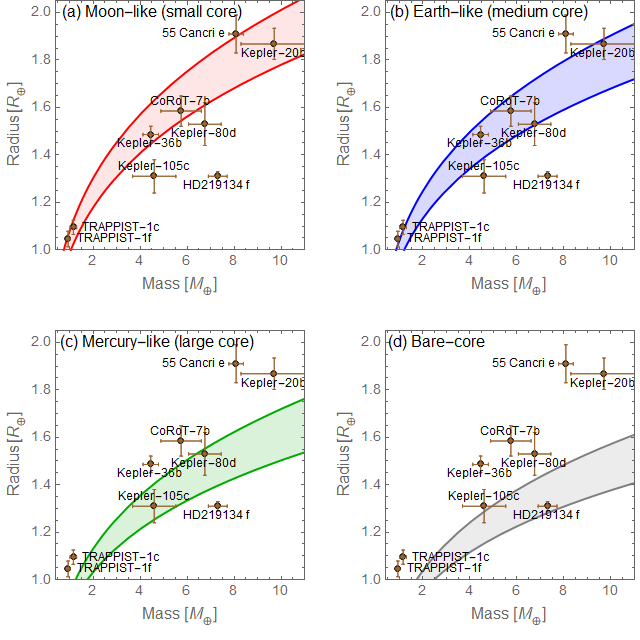 For most small exoplanets, physical parameters revealed by telescopic observations are limited to (minimum) mass and/or radius. If both mass and radius are known for an exoplanet, its bulk density and bulk composition can be estimated to first order. In this paper, we compute mass-radius relations of super-Earths (rocky exoplanets larger than Earth). We demonstrate various sources of degeneracies involved in the formulation of mass-radius relations such as uncertainties in material equations of state at high pressures as well as in modeling assumptions about mineralogy and planetary structure.
For most small exoplanets, physical parameters revealed by telescopic observations are limited to (minimum) mass and/or radius. If both mass and radius are known for an exoplanet, its bulk density and bulk composition can be estimated to first order. In this paper, we compute mass-radius relations of super-Earths (rocky exoplanets larger than Earth). We demonstrate various sources of degeneracies involved in the formulation of mass-radius relations such as uncertainties in material equations of state at high pressures as well as in modeling assumptions about mineralogy and planetary structure.
Download Equation of State of Iron up to 137 000 GPa
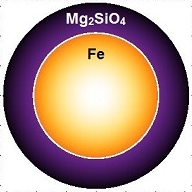 To formulate mass-radius relations, interior structure calculations are performed which need accurate material equations of state as input. In this paper, we provide a new ab initio equation of state of iron applicable to the interior of super-Earths and larger planets. This equation of state is valid for pressures up to 137 TPa (1370 million times the atmospheric pressure). You can download the equation of state of iron in two forms: Original and Interpolated. The original form consists of the original ab initio data for 181 pressure-volume values. The interpolated form consists of 137001 pressure-volume values at 1 GPa resolution.
To formulate mass-radius relations, interior structure calculations are performed which need accurate material equations of state as input. In this paper, we provide a new ab initio equation of state of iron applicable to the interior of super-Earths and larger planets. This equation of state is valid for pressures up to 137 TPa (1370 million times the atmospheric pressure). You can download the equation of state of iron in two forms: Original and Interpolated. The original form consists of the original ab initio data for 181 pressure-volume values. The interpolated form consists of 137001 pressure-volume values at 1 GPa resolution.
Media coverage: Science Trends
High-Pressure Laboratory Experiments
 Although planetary interiors are not directly accessible (not even for Earth!), it is possible to study them with high-pressure high-temperature machines capable of reproducing planetary interior conditions in a laboratory. These experiments are especially vital in studying the rocks and minerals of exoplanets which have no Solar System analogs. Here we investigate the types of minerals making up the interior of carbon-rich rocky exoplanets. Of course, diamond is one of the possibilities! In another study, we show why it is difficult to stabilize silicon carbide in planetary interiors.
Although planetary interiors are not directly accessible (not even for Earth!), it is possible to study them with high-pressure high-temperature machines capable of reproducing planetary interior conditions in a laboratory. These experiments are especially vital in studying the rocks and minerals of exoplanets which have no Solar System analogs. Here we investigate the types of minerals making up the interior of carbon-rich rocky exoplanets. Of course, diamond is one of the possibilities! In another study, we show why it is difficult to stabilize silicon carbide in planetary interiors.
Media coverage: New Scientist, Interview with Folia Magazine, Interview with BNR Radio, Astronomie.nl
Thermal Evolution of Planetary Interiors
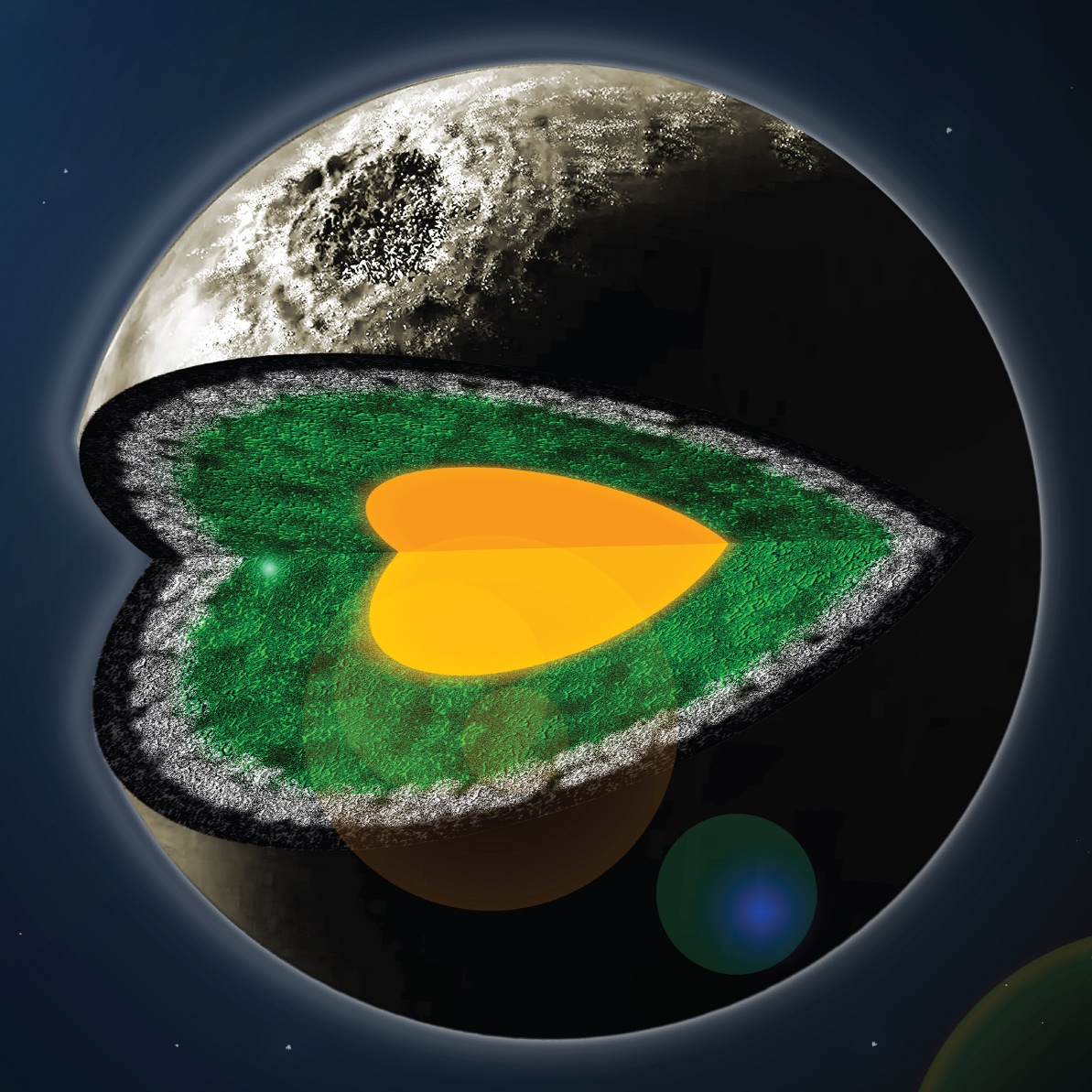 With ever-increasing observations-driven information on exoplanet parameters, it is becoming important to constrain the thermal state of the interior which can further provide meaningful surface and atmospheric properties. Here we demonstrate the application of the classical Rayleigh-Bénard convection to model the thermal evolution of rocky exoplanets with an iron core, silicate mantle and a graphite outer shell.
With ever-increasing observations-driven information on exoplanet parameters, it is becoming important to constrain the thermal state of the interior which can further provide meaningful surface and atmospheric properties. Here we demonstrate the application of the classical Rayleigh-Bénard convection to model the thermal evolution of rocky exoplanets with an iron core, silicate mantle and a graphite outer shell.
Geochemical Cycles
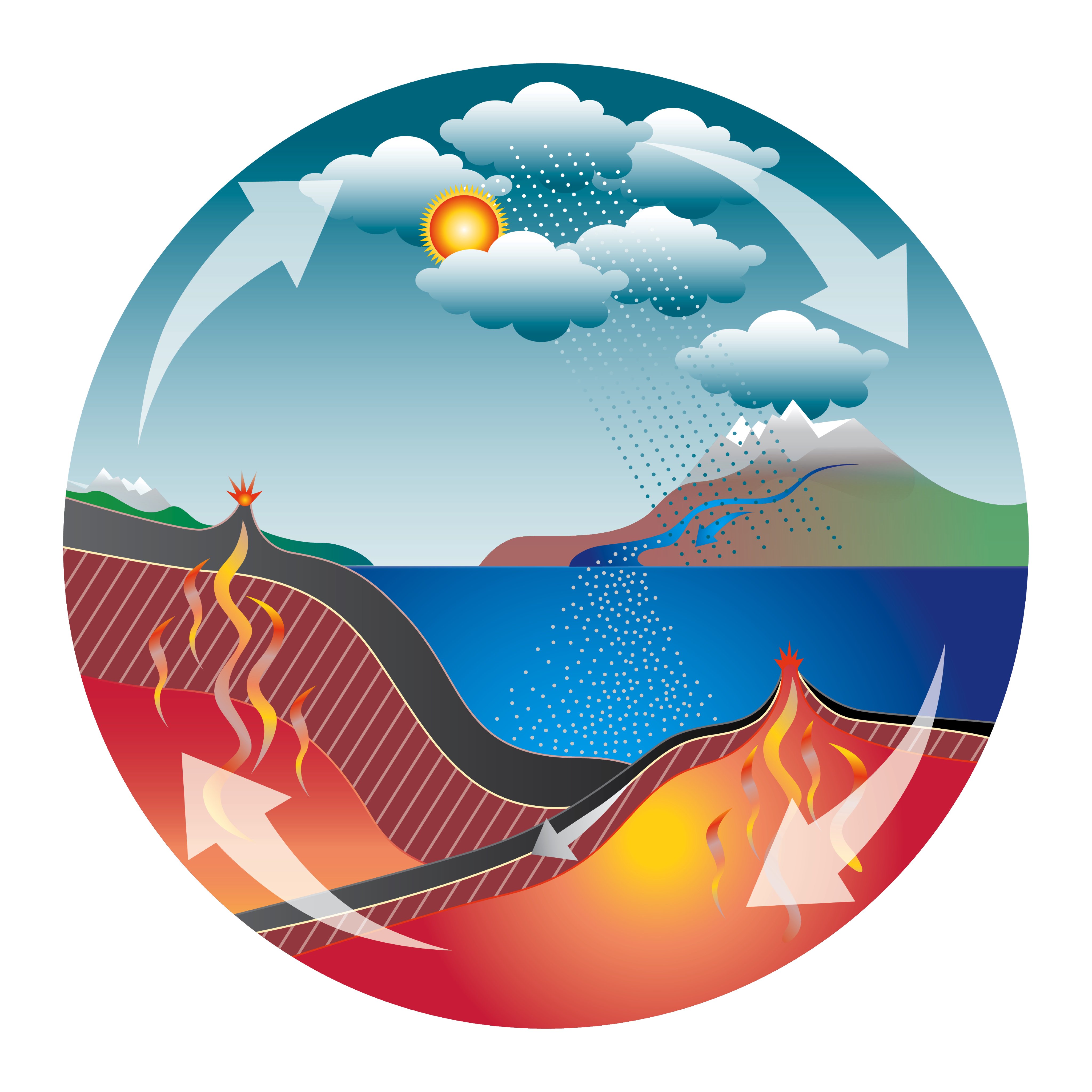 Geochemical cycles such as the long-term carbon cycle (carbonate-silicate cycle) enables the exchange of carbon dioxide between the atmosphere and the interior on Earth. How such a cycle might or might not work on exoplanets is an important question to understand the extent of Earth-like habitable conditions on exoplanets. Here we study the impact of surface rock types (lithology) on the intensity of silicate weathering. Here we model the influence of carbonate rocks on exoplanet ocean chemistry.
Geochemical cycles such as the long-term carbon cycle (carbonate-silicate cycle) enables the exchange of carbon dioxide between the atmosphere and the interior on Earth. How such a cycle might or might not work on exoplanets is an important question to understand the extent of Earth-like habitable conditions on exoplanets. Here we study the impact of surface rock types (lithology) on the intensity of silicate weathering. Here we model the influence of carbonate rocks on exoplanet ocean chemistry.
Illustration by: Jenny Leibundgut
Interior-Atmosphere Interactions
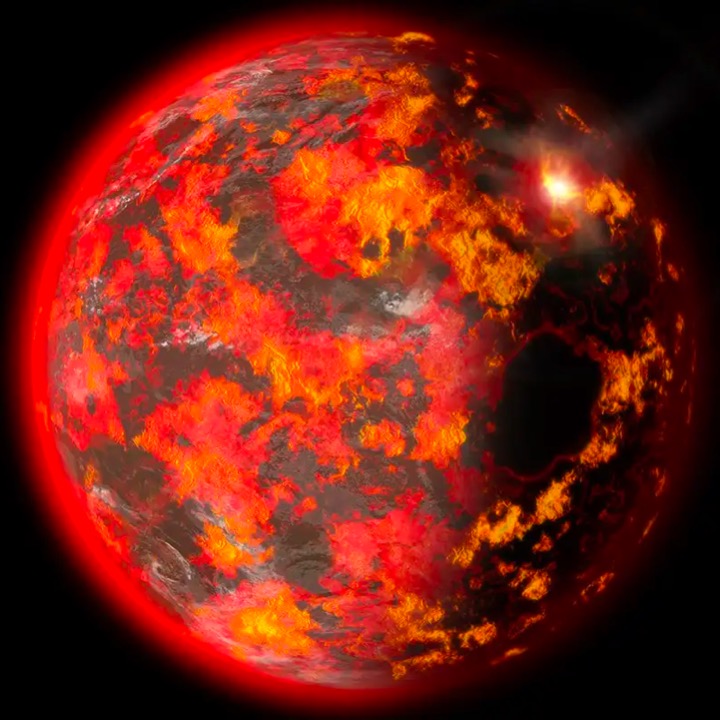 The atmospheric composition of exoplanets smaller than Neptune is strongly influenced by interior-atmosphere interactions. Moreover, the composition of volatiles in the interior is also affected by the atmosphere. Here we model the interior-atmosphere chemical coupling to show that early atmospheres of rocky exoplanets are more reducing than previously thought.
The atmospheric composition of exoplanets smaller than Neptune is strongly influenced by interior-atmosphere interactions. Moreover, the composition of volatiles in the interior is also affected by the atmosphere. Here we model the interior-atmosphere chemical coupling to show that early atmospheres of rocky exoplanets are more reducing than previously thought.
Credit: Shutterstock/Diego Barucco
About Me

Prior to my current position, I was a Postdoc at the University of Bern, Switzerland. My PhD in Astrophysics and Geochemistry was from the University of Amsterdam and Vrije University Amsterdam, Netherlands. I obtained my master's degree in Astronomy and Astrophysics from KU Leuven, Belgium and my bachelor's degree in Electronics Engineering from IIT Kharagpur, India. I have also lived in Mumbai for a couple of years working for an investment bank, Nomura.




